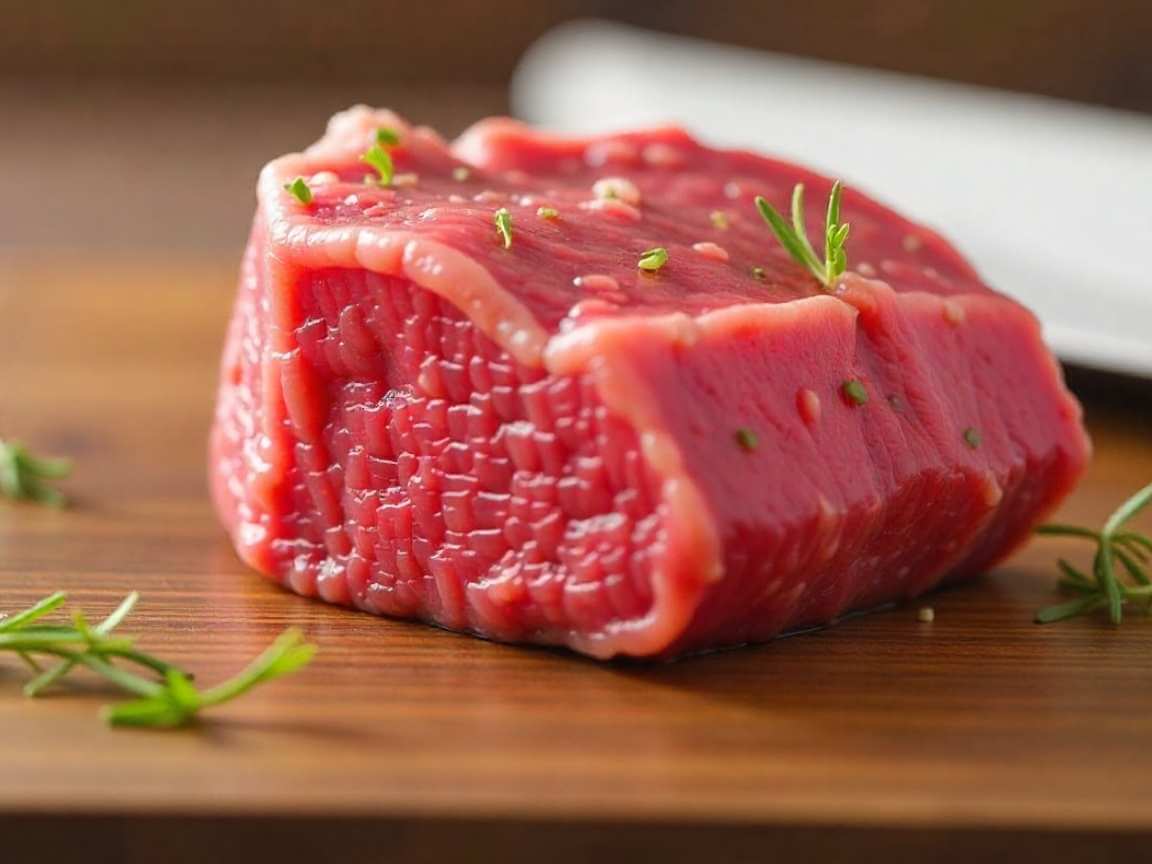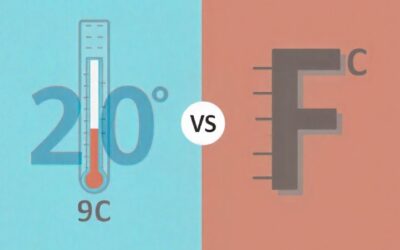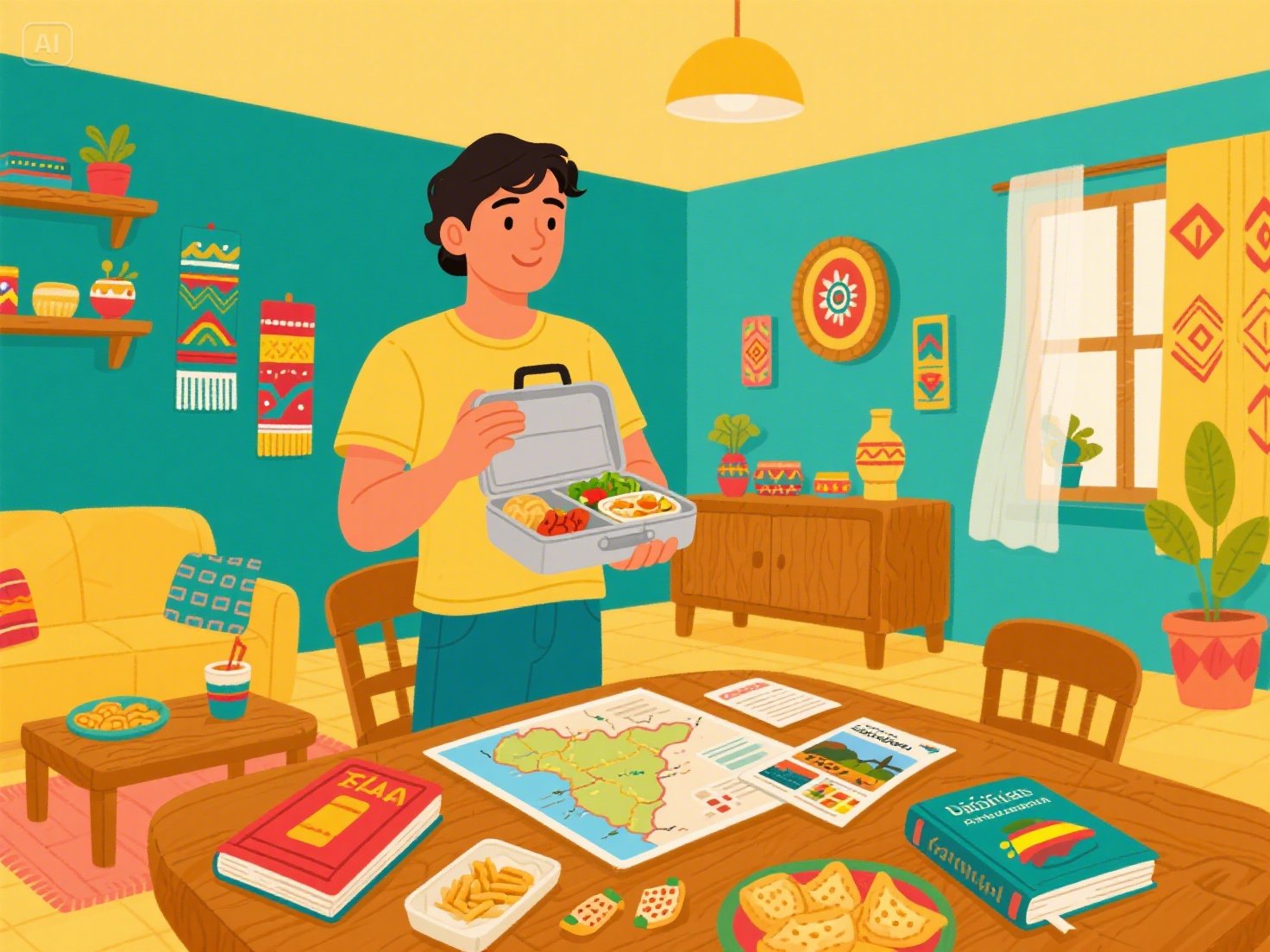When you’re learning Spanish, seemingly simple words like “lunch” can teach you a lot about grammar, culture, and vocabulary. Knowing how to talk about meals is essential whether you’re traveling to a Spanish-speaking country, dining with friends, or practicing your language skills.
This guide will help you say and use “lunch” correctly in Spanish, explore its cultural significance, and teach related phrases to make you sound like a native speaker.
What is the Word for Lunch in Spanish?
The literal translation of “lunch” in Spanish is “almuerzo” (pronounced “ahl-moo-ehr-soh”). Depending on the region, some Spanish-speaking people may also use the word “comida” (pronounced “koh-mee-dah”) when referring to the main meal of the day, which is typically in the afternoon.
Differences Between Almuerzo and Comida

- In certain countries, such as Spain, almuerzo traditionally refers to a mid-morning meal or snack. However, in many Spanish-speaking countries, it is also widely recognized and used to mean “lunch.”
- Comida, conversely, directly translates to “food” but is also commonly used in Mexico and many parts of Latin America to describe lunch since it is usually the largest and most important meal of the day.
- The main difference between these two words is the time of day they are typically consumed, with almuerzo being earlier in the day and comida being a midday meal.
- In some countries, such as Colombia, almuerzo and comida can be used interchangeably to refer to lunch. However, depending on which word is used, there may still be subtle differences in the type of food served or the formality of the meal.
- Almuerzos are often lighter than comidas, which are more elaborate and include multiple courses.
- Comidas are generally longer and more leisurely, whereas almuerzos are meant to be quick and convenient.
- In Spain, lunch is typically called “la comida” and may include a siesta (midday nap) afterward.
- In many Latin American countries, lunch is considered the day’s main meal and can be a social event where family and friends gather to eat together.
- Lunch dishes in Spanish-speaking countries vary greatly depending on the region and cultural influences. Some typical dishes include arroz con pollo (rice with chicken), ceviche (marinated seafood dish), tamales (steamed corn dough stuffed with meat or other fillings), and empanadas (fried or baked pastries filled with various ingredients).
- Many Spanish-speaking countries also have a siesta, a short nap taken after lunch. This tradition originated in Spain and was meant to allow people to rest during the hottest part of the day. While not as widely practiced nowadays, some businesses may still close for a few hours during the afternoon to observe this tradition.
- In many Latin American countries, dinner is usually lighter than lunch. It often consists of smaller dishes or snacks, such as tapas in Spain, antojitos in Mexico, or pinches in Puerto Rico.
If you’re traveling or speaking to a native Spanish speaker, understanding the context will help you determine which term they prefer for “lunch.”
Example Sentences
- “Hoy almorzamos a las doce.”
(We’re having lunch at twelve today.)
- “La comida estuvo deliciosa.”
(The lunch was delicious.)
Cultural Significance of Lunch in Spanish-Speaking Countries
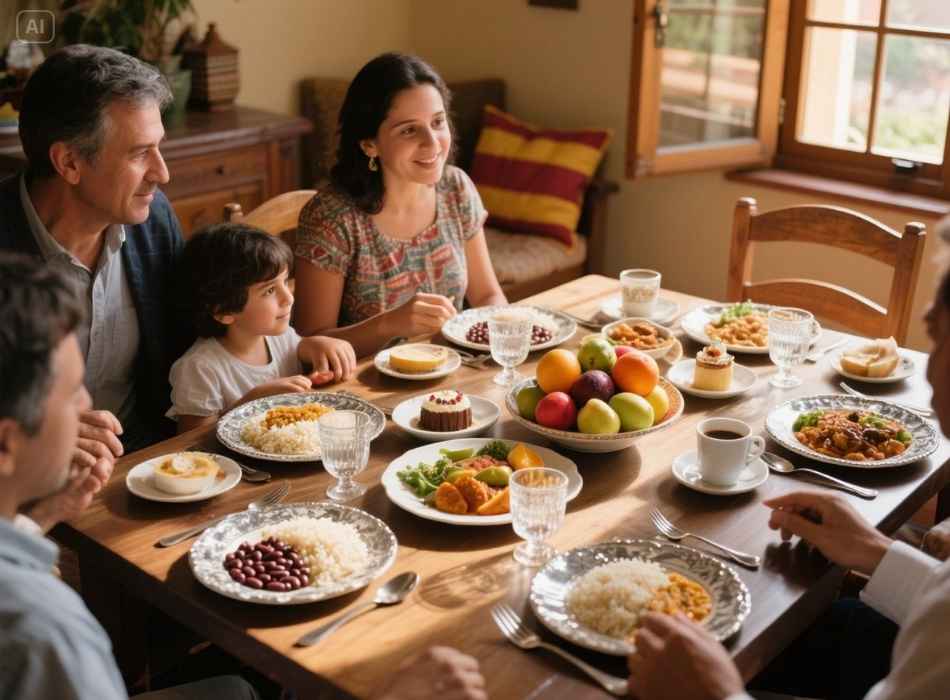
In Spanish culture, lunch is more than just a meal; it’s often a time for family, connection, and rest. For example, in many Latino cultures, lunch (or “Comida”) is the biggest and most elaborate meal of the day. It might include multiple courses, a dessert, and even coffee afterward.
Siesta Traditions
The siesta, a short midday rest or nap, is a well-known tradition tied closely to lunchtime. After a hearty lunch, it’s not uncommon for people in Spain or other parts of the Hispanic world to take a short break before resuming work.
How to Use Almuerzo in Common Conversations
Learning a word is one thing, but using it naturally is where you’ll shine. Here are some practical phrases featuring almuerzo that you can use in everyday conversations:
| English | Spanish |
|---|---|
| What’s for lunch? | ¿Qué hay de almuerzo? |
| I’m preparing lunch. | Estoy preparando el almuerzo. |
| Shall we have lunch together? | ¿Almorzamos juntos? |
| Lunch is my favorite meal. | El almuerzo es mi comida favorita. |
| Where can we have lunch? | ¿Dónde podemos almorzar? |
Related Vocabulary
Meal-Related Words in Spanish
- Breakfast – Desayuno (deh-sah-yoo-noh)
- Snack – Merienda (meh-ryehn-dah)
- Dinner – Cena (seh-nah)
Food Items You Might Eat for Lunch
- Sandwich – Sándwich or Bocadillo (in Spain)
- Salad – Ensalada
- Soup – Sopa
- Rice – Arroz
- Beans – Frijoles
Phrases for Ordering Lunch
If you’re dining out or ordering lunch in Spanish, practicing some of these phrases might come in handy:
- “Quiero el plato especial, por favor.”
(I’d like today’s special, please.)
- “¿Qué me recomienda para almorzar?”
(What do you recommend for lunch?)
- “¿Cuánto cuesta el menú de almuerzo?”
(How much is the lunch menu?)
Almuerzo and Comida Regional Variations

Spanish is a rich and diverse language spoken in many countries, and regional differences often apply to how people describe meals. Here’s how “lunch” might be understood in various regions:
- Mexico and Central America
“Comida” is commonly used to describe lunch as it is regarded as the day’s main meal.
- Argentina and Uruguay
These countries closely align with European traditions. Lunch may still be called “almuerzo,” but lighter meals or snacks (like tarts or quiche) are also popular.
- Spain
Lunch is called “almuerzo” and may involve multiple courses, often followed by a siesta. However, Spaniards will also use “comida” interchangeably.
- Caribbean Regions
You might find more informal terms like “plato fuerte” (hearty plate). Lunch tends to include flavorful dishes like rice and beans or fried plantains. In Cuba, the midday meal is called “almuerzo” and typically includes a variety of dishes such as meat, rice, and beans.
- South America
In South American countries like Argentina and Chile, lunch is a substantial meal with multiple courses. It usually starts around 1 or 2 PM and lasts several hours. Some popular dishes include empanadas (savory turnovers) and asado (grilled meats).
- Central America
Lunch in Central America is often lighter than in other regions. In Costa Rica, it’s common to have a “Casado,” meaning “married man,” referring to the combination of different foods on one plate. This typically includes rice, beans, plantains, and a choice of meat or fish.
- Caribbean
In the Caribbean, lunch is usually a mix of African, European, and Indigenous influences. A popular dish in many Caribbean countries is jerk chicken, marinated with spices and slow-cooked over coals. Another staple is rice and peas, made with kidney beans or black-eyed peas cooked in coconut milk and served alongside stews or curries.
Different Eating Habits
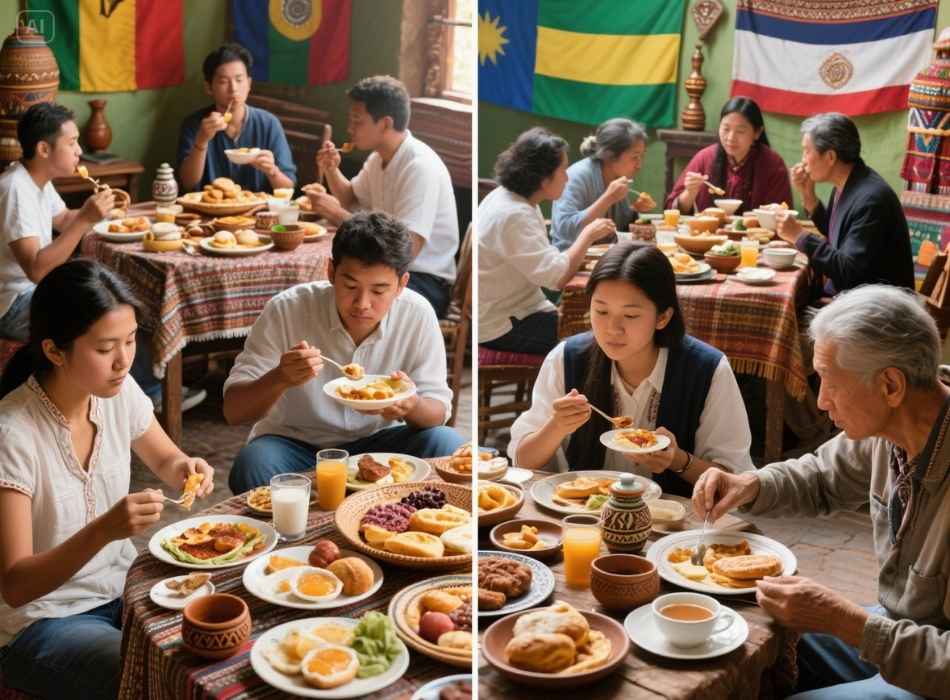
Different cultures also have various eating habits when it comes to meals. For example, some cultures may devour their meals while others take more time to enjoy their food. In some countries, it’s common to have a large breakfast, while in others, breakfast may be a light meal.
Some cultures also have specific customs and rituals surrounding meals. For instance, in Japan, it is customary to say “itadakimasu” before beginning a meal, which translates to “I humbly receive.” This is seen as an expression of gratitude for the food and those preparing it.
In addition, certain cultures may have rules or etiquette around sharing food. In China, leaving a little bit of food on your plate after a meal to show that you are full is considered polite. On the other hand, in Western cultures, finishing all the food on your plate is more common as a sign of enjoyment and appreciation for the meal.
Sharing Food in Different Social Situations
Food is not only a means of survival, but it also plays a significant role in social situations. Sharing food can bring people together and create a sense of community. In many cultures, sharing food is seen as generosity and kindness.
In some cultures, such as Mediterranean countries, family-style dining involves sharing multiple dishes among everyone at the table. This allows for a variety of flavors and encourages conversation and connection over the shared experience of enjoying a meal together.
Fun Fact about Lunch in Spanish
Did you know that the Spanish word almuerzo comes from the Latin phrase amorous, which means “to bite” or “snack”? Over time, the term evolved to represent a mid-morning or midday meal.
Take Your Spanish to the Next Level
Learning how to say “lunch” in Spanish is just the beginning! Expand your vocabulary by practicing mealtime conversations, visiting restaurants, or replicating traditional dishes at home to connect with the language through culture.
Want to feel more confident in your Spanish? Bookmark this guide, and next time you plan your meal in a Spanish-speaking country, you’ll know exactly what to say.












